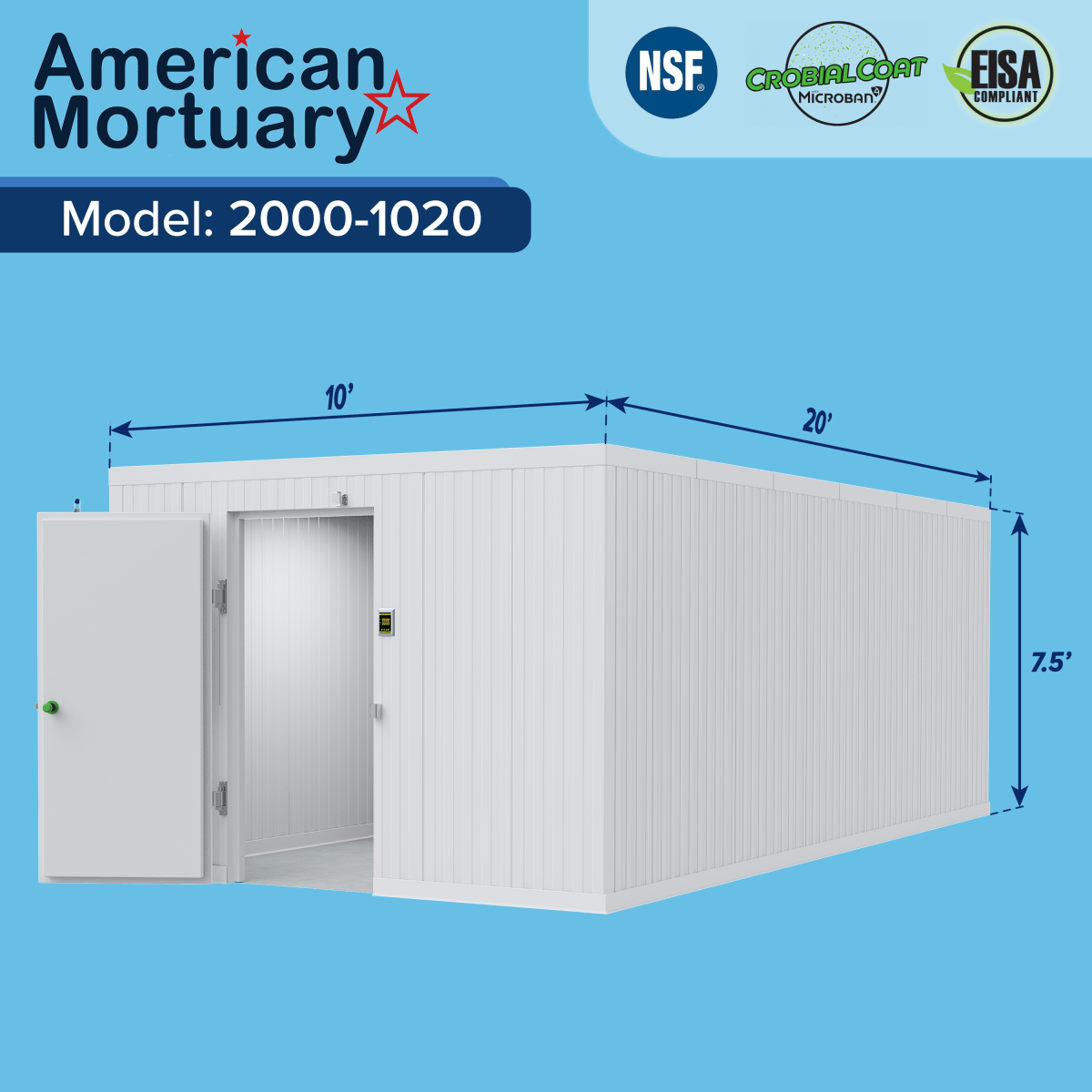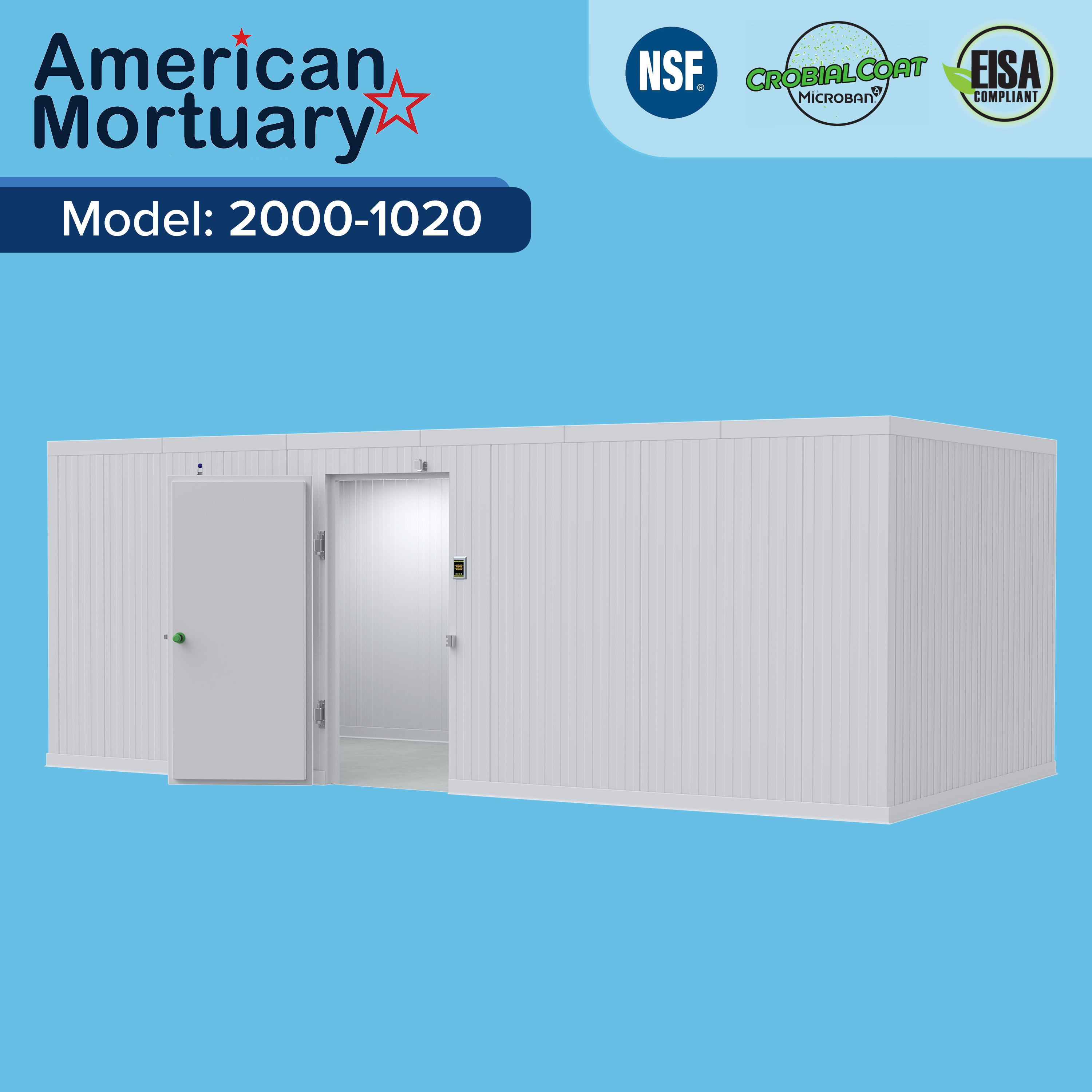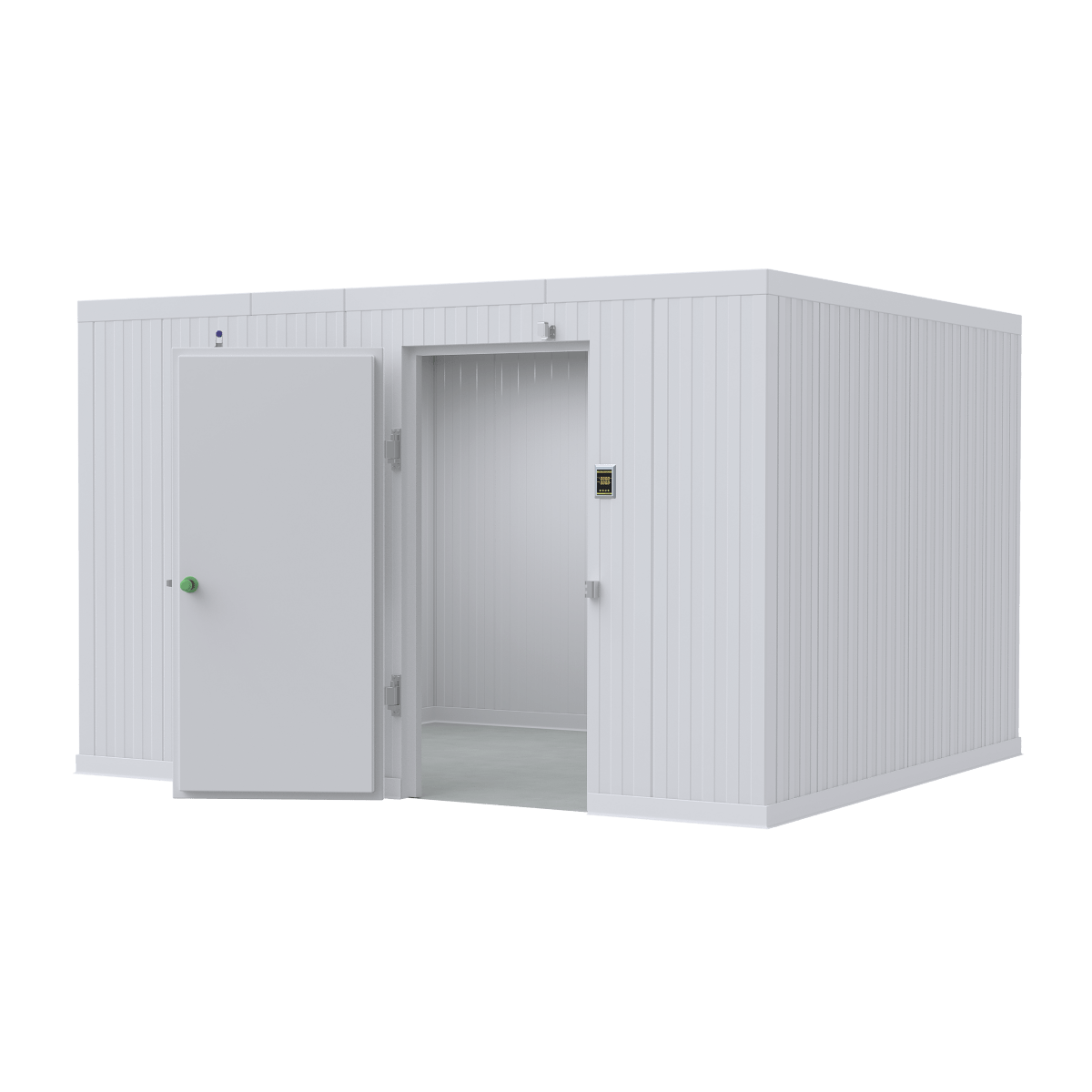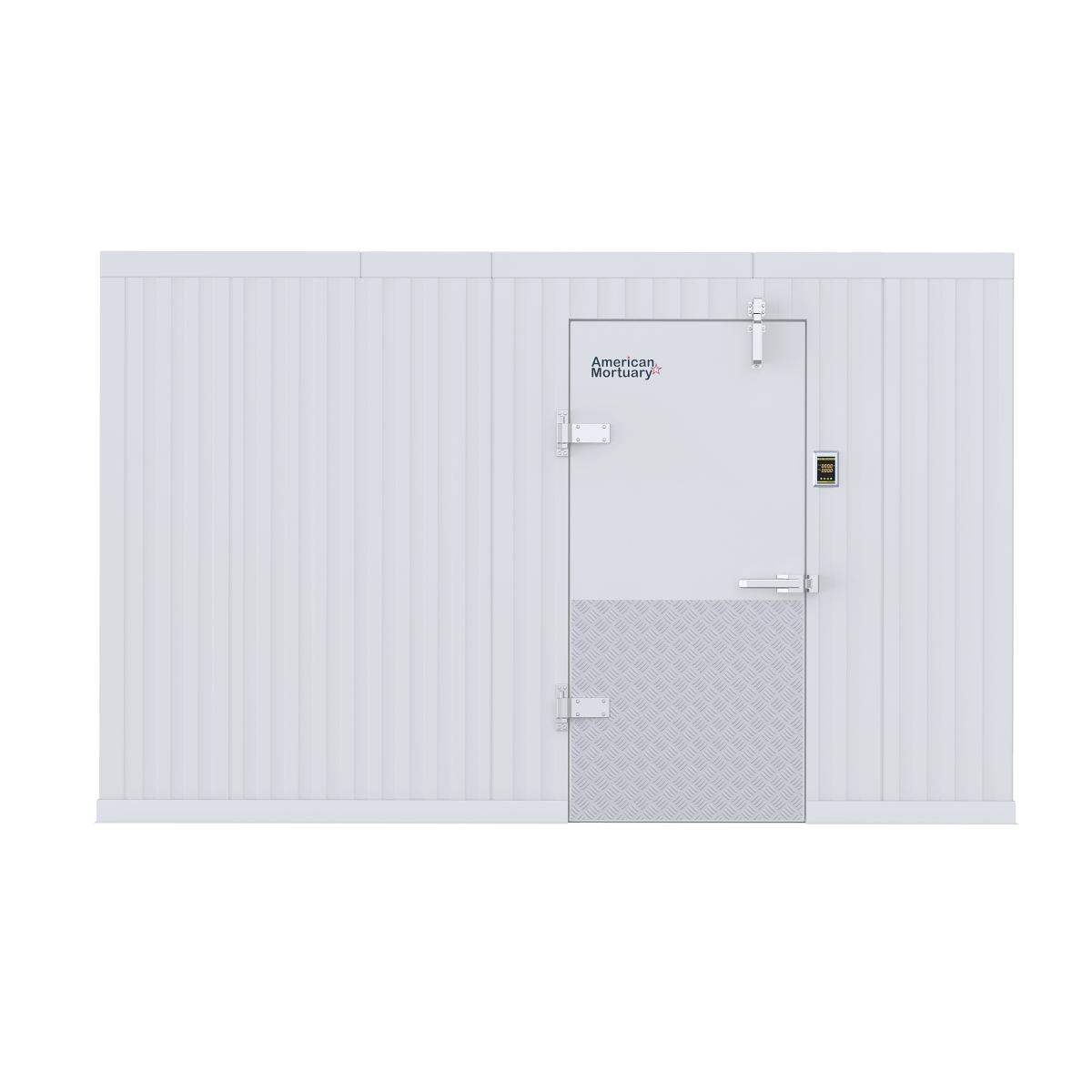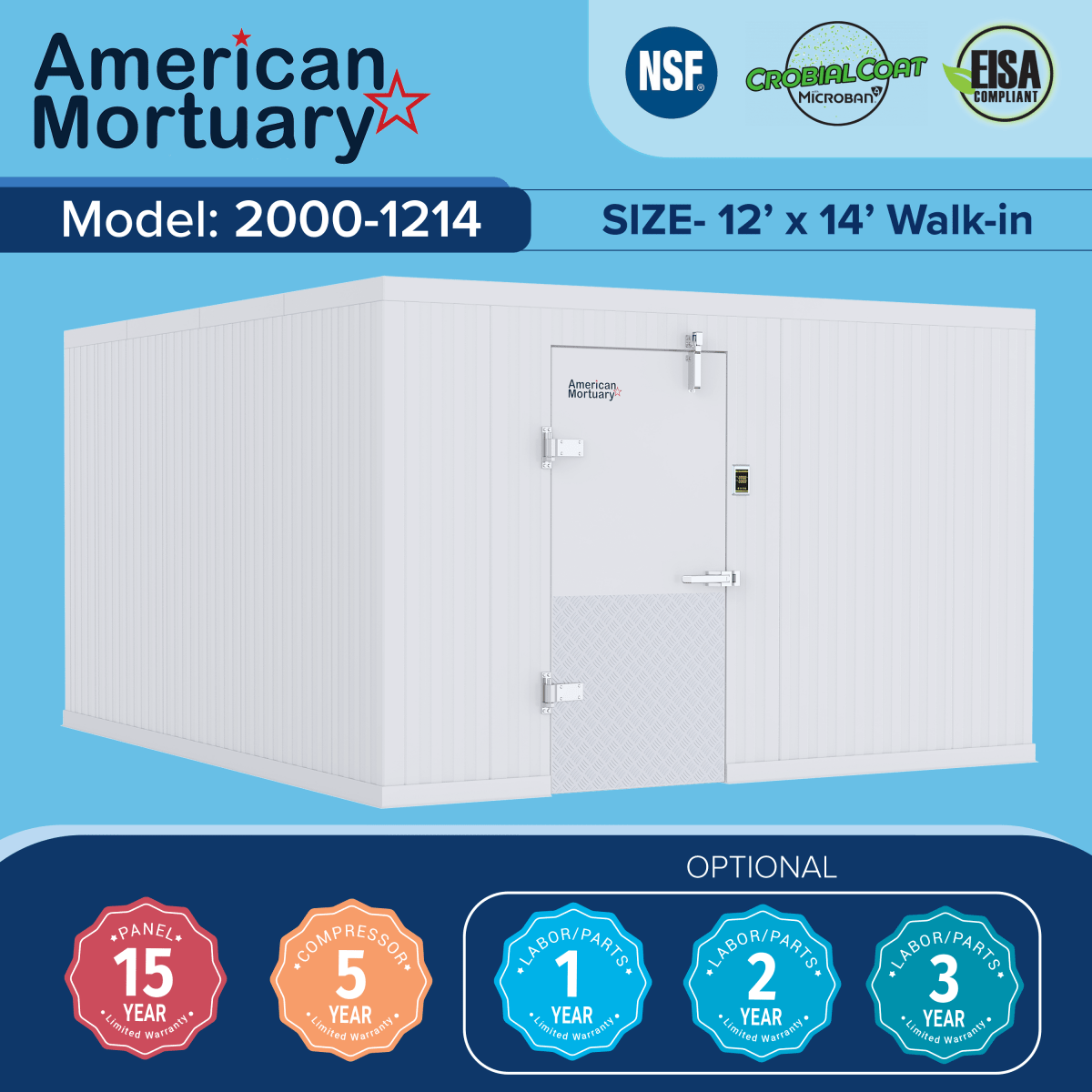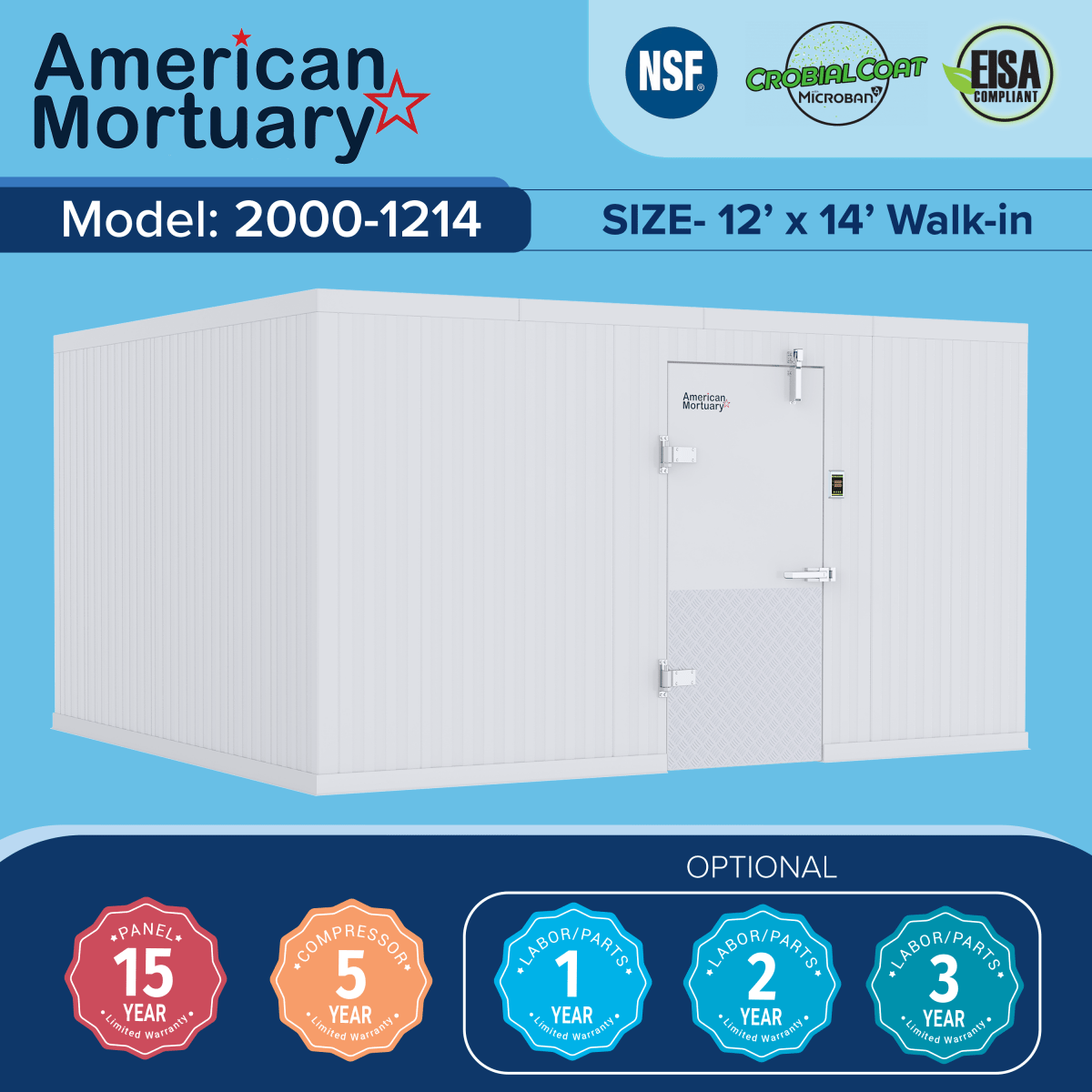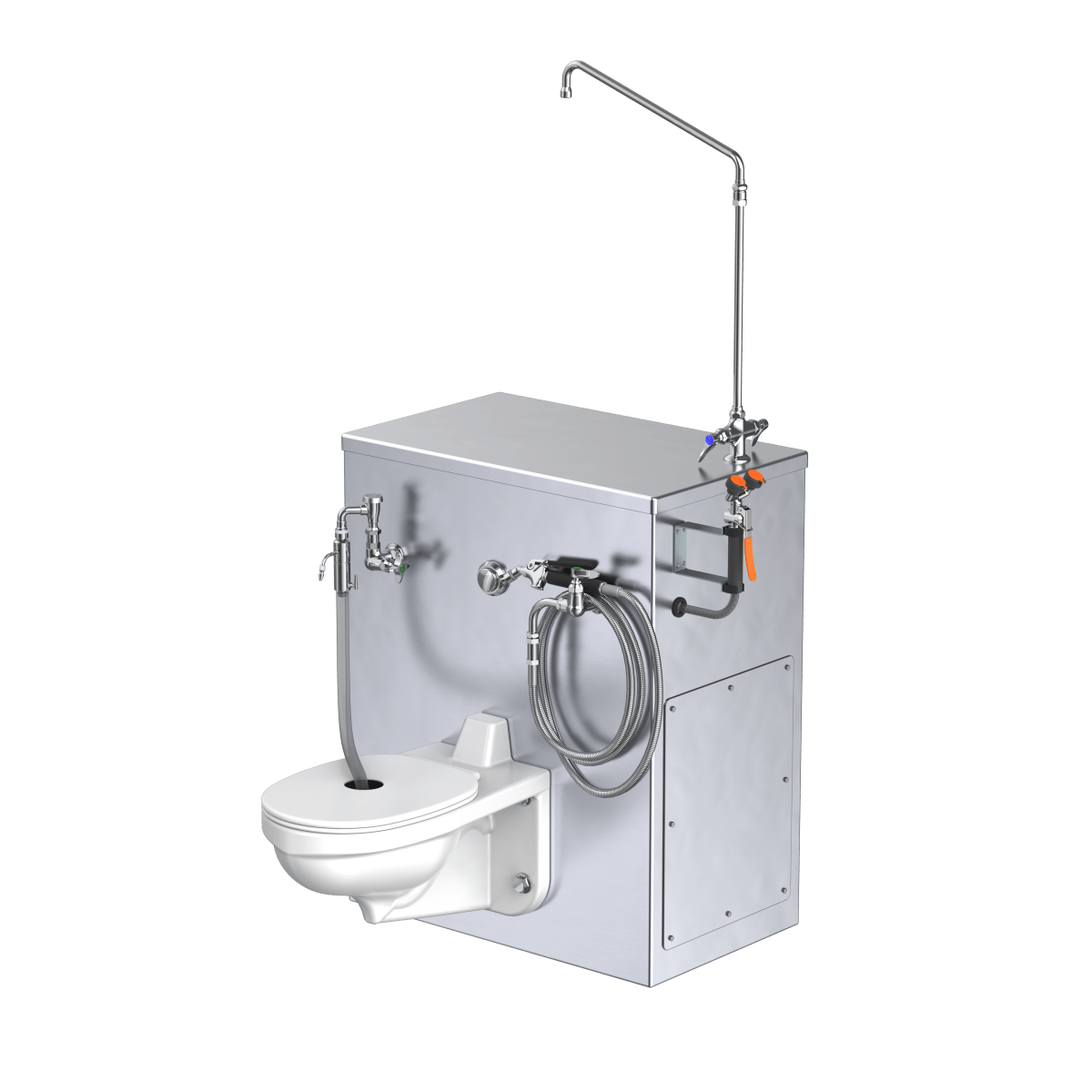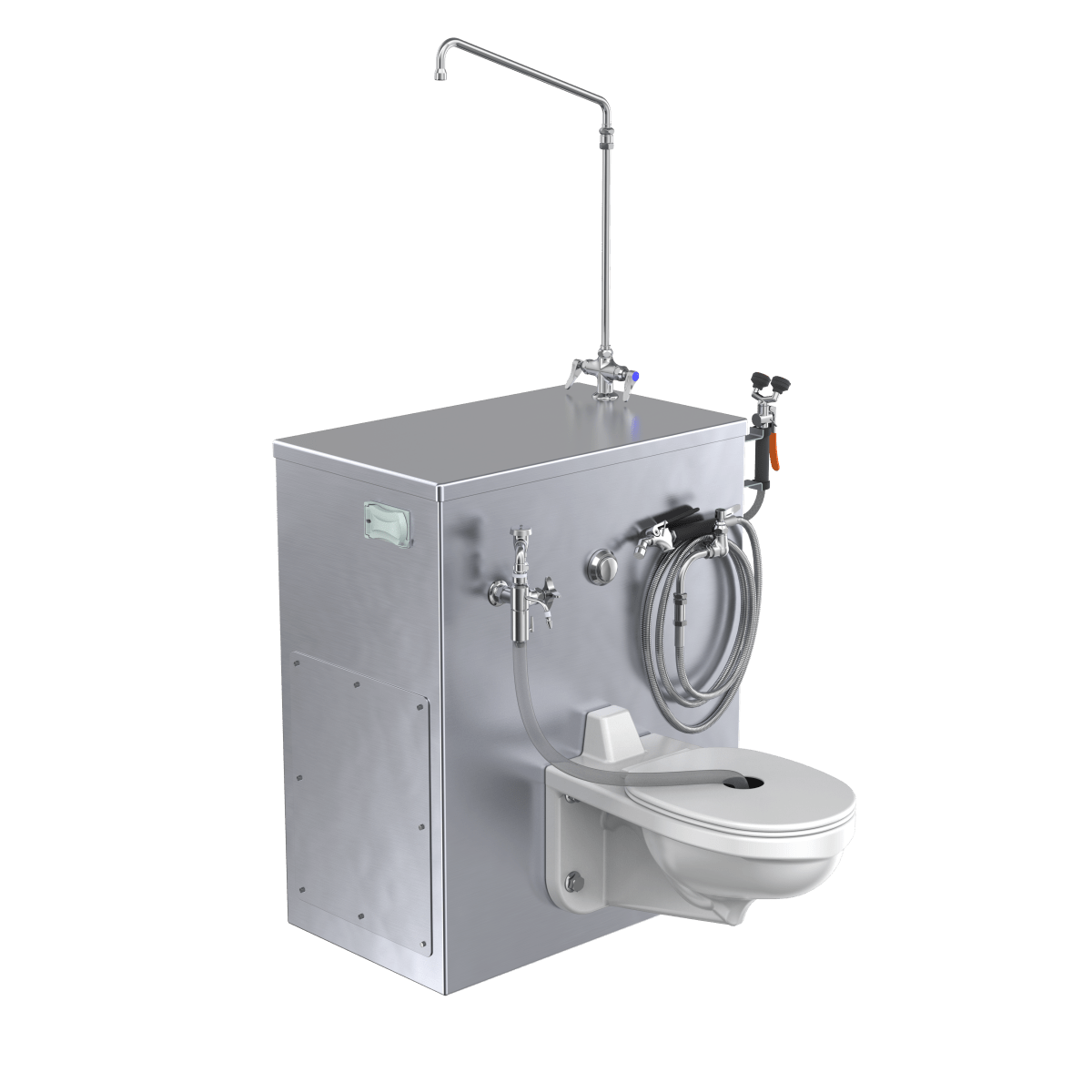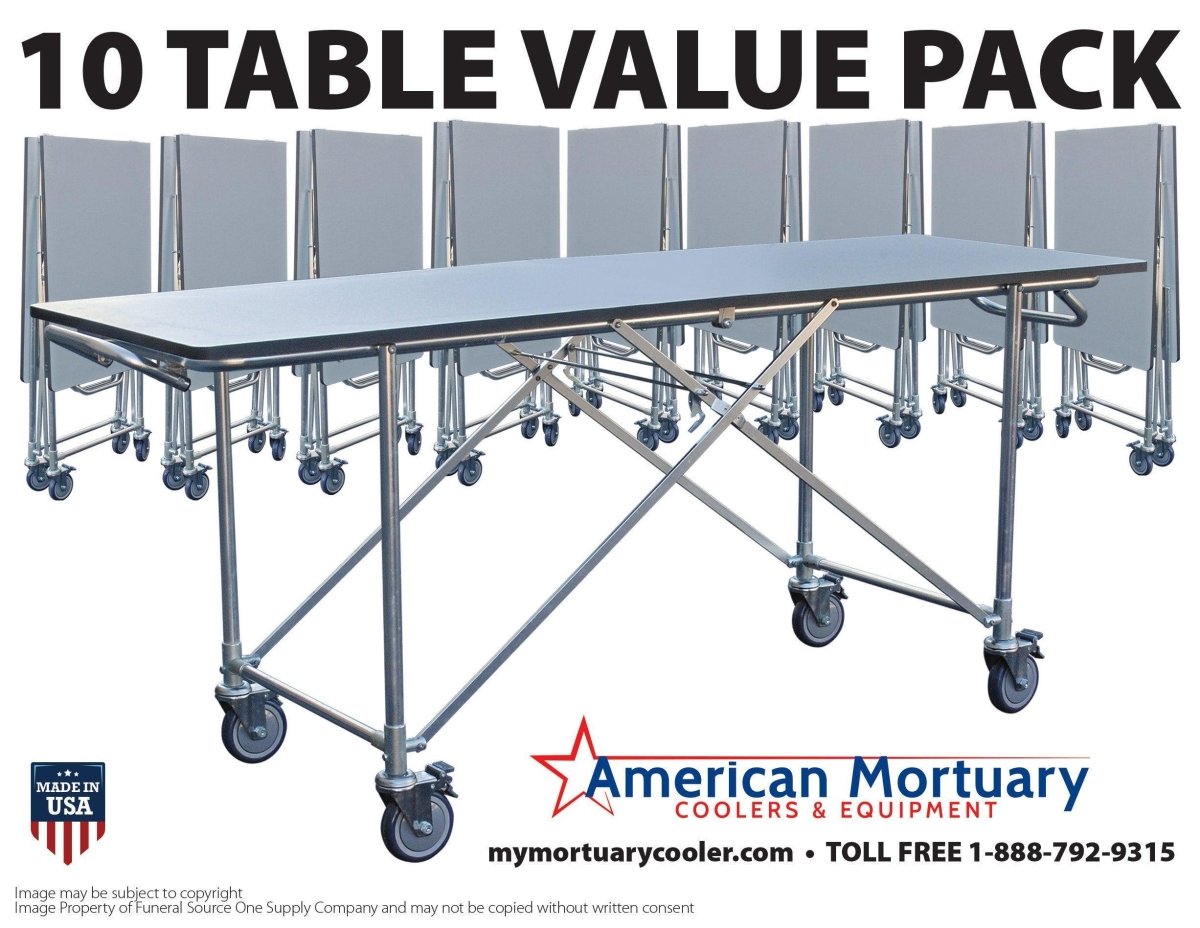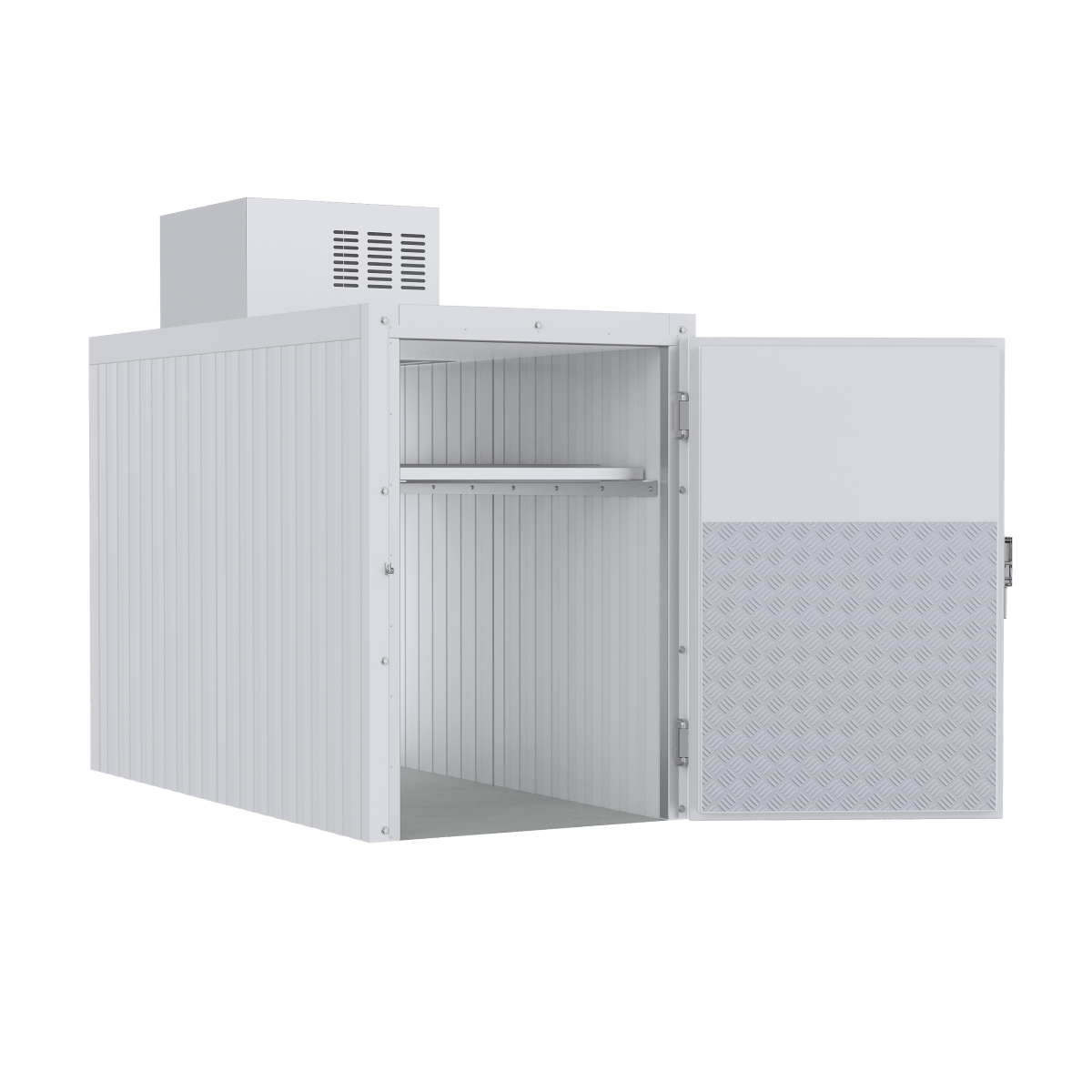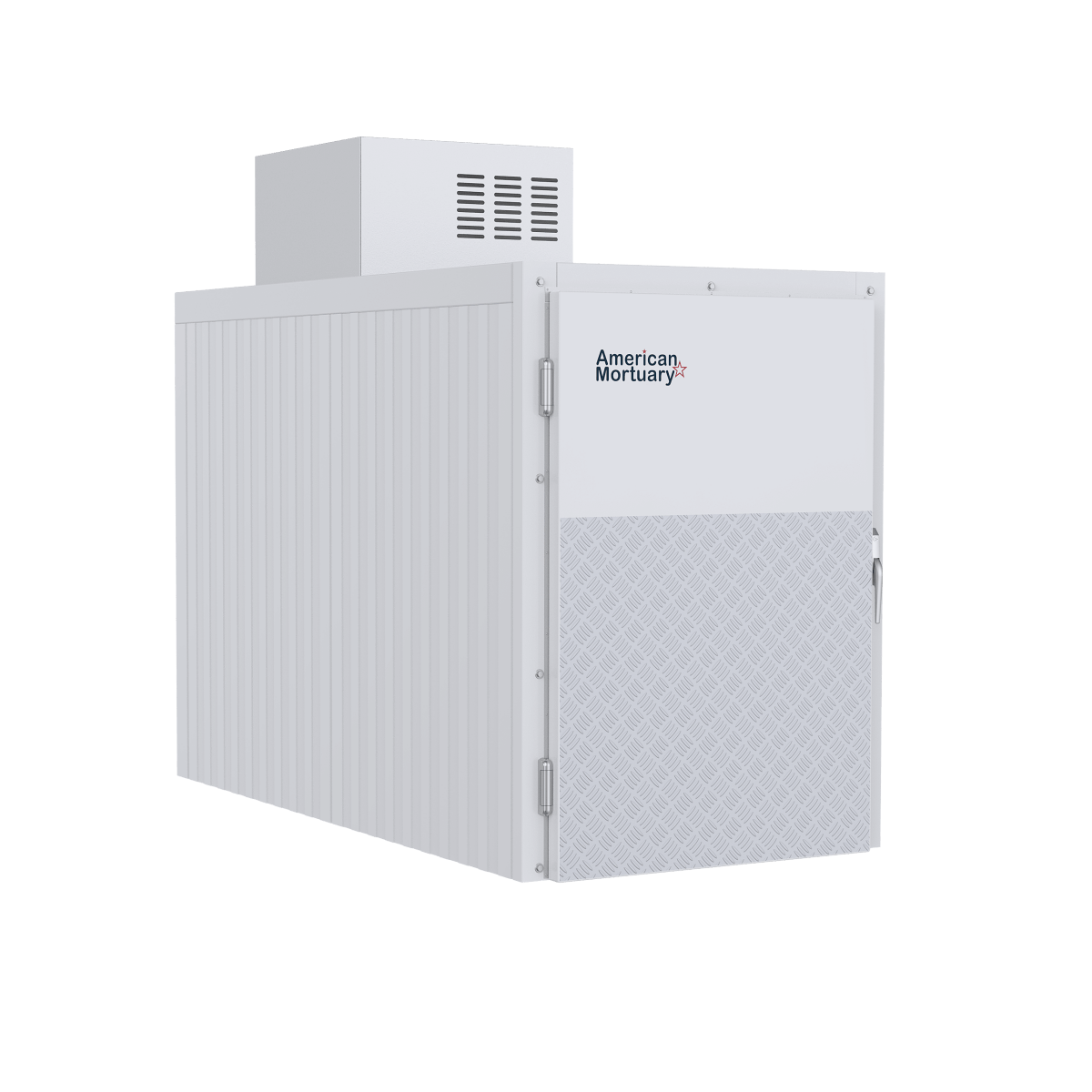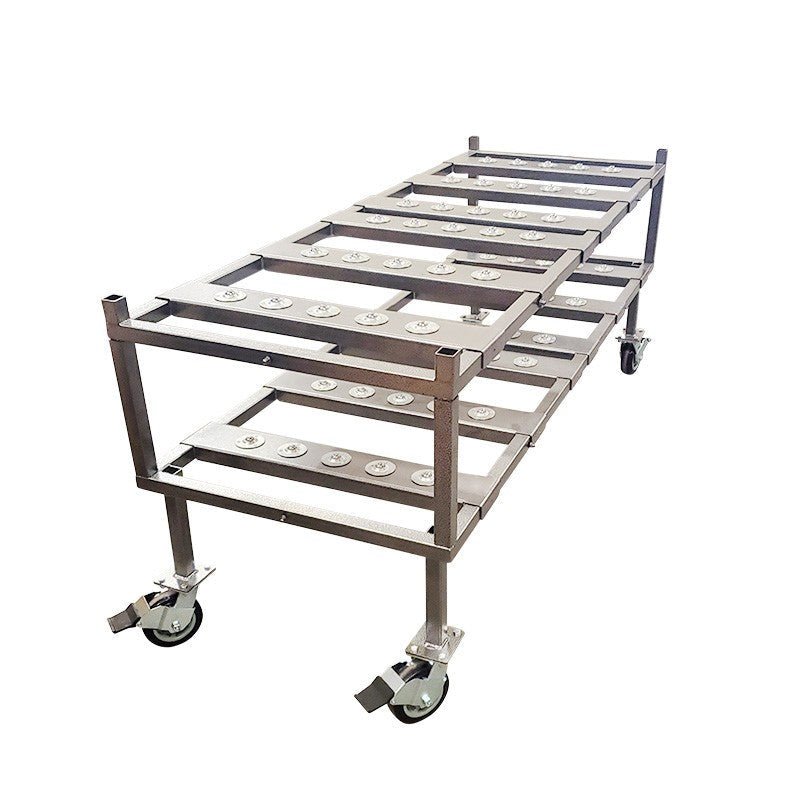The Complete Guide to Mortuary Fridge Prices
When a loved one passes away, time becomes incredibly precious—and so does proper preservation. For those of us in the funeral industry, finding the right refrigeration solution isn't just about numbers on a spreadsheet; it's about providing families with dignified care during their most vulnerable moments.
Mortuary fridges prices vary significantly based on several factors that I've seen matter most to funeral directors over the years. A quick snapshot of current market prices shows:
| Capacity | US-Made Price Range | Imported Price Range |
|---|---|---|
| 1-Body | $5,800 - $6,500 | $1,600 - $2,500 |
| 2-Body | $6,095 - $7,199 | $1,600 - $2,800 |
| 3-Body | $7,611 - $8,559 | $2,000 - $3,500 |
| 4-Body | $9,049 - $10,454 | $2,500 - $4,200 |
| 6-Body | $15,000 - $25,695 | $3,000 - $5,500 |
| 9-Body | $24,000 - $32,995 | $4,000 - $4,800 |
I've helped hundreds of funeral homes steer these price ranges over the years. What I've found is that while imported units from China might tempt you with their 50-70% lower price tags, they often come with hidden costs—shipping fees, customs delays, and potential maintenance headaches that can offset those initial savings.
American-made units, though commanding higher upfront prices, typically offer peace of mind through longer warranties and guaranteed compliance with federal energy standards. For many of my clients, this reliability proves invaluable during their busiest times.
The price differences aren't arbitrary. They stem from key factors like construction materials (medical-grade stainless steel costs more than standard metal), temperature capabilities (negative-temperature units for longer preservation run higher), and the inclusion of advanced features like digital monitoring systems.

I'm here at American Mortuary Coolers to help you find that sweet spot where quality meets budget reality. After all, the right refrigeration system isn't just equipment—it's a crucial component of the compassionate care you provide families every day.
If you're exploring specific aspects of mortuary refrigeration, you might find these resources helpful:
- Do refrigerated bodies at hospital morgues smell bad - Addressing common questions about morgue environments
- Portable morgue refrigeration - Options for temporary or mobile solutions
- Morgue refrigeration equipment - A comprehensive overview of available equipment
Let's explore how capacity, features, and other factors affect mortuary fridges prices so you can make the most informed decision for your facility's needs.
Understanding Mortuary Fridge Types & Capacities

When you're in the market for mortuary refrigeration, understanding the various types and capacities isn't just helpful—it's essential. I've spent years helping funeral directors find the perfect balance between their needs and their budget, and I've found that knowledge truly is power when it comes to making this important investment.
Let's start with the basics. Mortuary refrigerators come in two main temperature varieties. Positive-temperature units maintain bodies at a cool 2°C to 4°C (that's 36°F to 39°F for those who prefer Fahrenheit). These are your standard units that most funeral homes rely on for typical services, keeping bodies preserved for several days to a week.
On the other hand, negative-temperature units take preservation to another level, chilling remains to -10°C to -50°C (14°F to -58°F). These freezer-style units practically stop decomposition in its tracks—ideal when you need extended preservation for forensic work or during disaster situations.
Beyond temperature, you'll encounter two primary configurations. Cabinet-style units are self-contained and can be moved if needed—perfect if you have limited space or your needs change seasonally. Walk-in coolers offer more extensive capacity, allowing staff to enter the refrigerated space, making them ideal for larger operations.
Most quality mortuary fridges feature stainless steel construction inside and out, which not only looks professional but also stands up to rigorous cleaning protocols. They're typically insulated with high-density polyurethane foam (usually about 80mm thick) that maintains consistent temperatures while keeping energy costs reasonable.
Want to dive deeper into your refrigeration options? More info about funeral home refrigeration options is available on our site.
Why Capacity Matters to mortuary fridges prices
I can't stress this enough: capacity is the single most significant factor affecting mortuary fridges prices. The difference between a single-body unit and a twelve-body walk-in cooler can mean thousands or even tens of thousands of dollars.
When I help funeral directors plan their refrigeration needs, I always encourage them to think beyond today. Your current caseload matters, but what about five years from now? Quality mortuary refrigeration typically lasts 10-15 years, so buying for future growth often makes financial sense.
Space planning is another crucial consideration. A typical 2-body unit needs about 7'3" x 3'¾" x 5'2" of space, while larger units require proportionally more room. I've seen too many funeral homes purchase units only to find they won't fit through doorways or in their designated spaces!
Seasonal fluctuations also deserve your attention. Many regions see higher death rates during winter months or flu season. Having adequate capacity for your busiest times prevents the stress and potential reputation damage that comes from inadequate facilities.
Different rack styles also impact both functionality and pricing. Roll-in coolers allow easy loading of bodies on cots, while upright coolers maximize vertical space in facilities with limited square footage. Telescoping slide rails offer premium access but at a higher price point (typically 15-30% more), and side-loading coolers work wonderfully in narrow spaces with limited access.
Positive vs. Negative Temperature Units
The temperature range you select significantly impacts both your initial investment and long-term operating costs.
Positive temperature units (2°C to 4°C) serve as the workhorses of most funeral homes and hospitals. They cost 20-30% less than their negative-temperature counterparts and consume less electricity while still providing sufficient preservation for typical services. Most bodies can be maintained for 7-10 days before visible decomposition begins—plenty of time for standard funeral arrangements.
Negative temperature units (-10°C and below) represent specialized technology that comes with a premium price tag—typically 30-50% higher than standard refrigerators. They require more robust compressors and insulation, which drives up both the initial cost and ongoing energy consumption. However, they're invaluable in medical examiner offices, forensic facilities, or disaster response scenarios where bodies may need preservation for weeks or even months.
I remember speaking with a forensic pathologist after a major natural disaster who told me, "When we're working with unidentified remains or complex cases, negative temperature units aren't a luxury—they're absolutely essential. The additional cost is completely justified by the preservation quality and extended timeframe they provide."
During large-scale emergencies, portable negative temperature units become lifesavers in more ways than one. Following Hurricane Katrina, mobile mortuary units were crucial in managing fatalities with dignity while identification processes were completed—a sobering reminder of why having the right equipment matters so deeply in our industry.
Mortuary Fridges Prices by Capacity (1–12 Body)
Let's talk dollars and cents when it comes to mortuary fridges prices. If you're in the market for one of these essential pieces of equipment, you'll quickly find that capacity is the biggest factor affecting what you'll pay.
Here's a friendly breakdown of what you can expect to invest based on how many bodies your facility needs to accommodate:
| Capacity | Configuration | US-Made Price | Imported Price | Features |
|---|---|---|---|---|
| 1-Body | Roll-In | $5,799 | $1,600-$1,900 | Basic, plug-in unit, 115V |
| 2-Body | Standard | $6,095 | $1,600-$2,800 | No floor model available |
| 2-Body | XL Roll-In | $7,199 | $2,000-$3,000 | Wider trays, 115V/1/60 |
| 3-Body | Standard | $7,611 | $2,000-$3,500 | 115V operation |
| 3-Body | X-Wide | $8,559 | $2,500-$4,000 | With floor, larger capacity |
| 4-Body | Standard | $9,049 | $2,500-$4,200 | With floor option |
| 4-Body | X-Wide | $10,454 | $3,000-$4,500 | Larger interior dimensions |
| 6-Body | Standard | $15,000+ | $3,000-$5,500 | Multiple configurations |
| 6-Body | Telescoping | $25,695 | $4,000-$6,200 | Premium access system |
| 9-Body | Standard | $24,000+ | $4,000-$4,800 | Larger facility solution |
| 12-Body | Walk-In | $32,995+ | $5,000-$7,400 | Commercial-grade system |
I've seen many funeral directors experience sticker shock when they first see the price difference between American-made and imported units. As our Dallas equipment specialist often tells clients, "Yes, the price gap looks huge on paper, but it's not quite as dramatic as it first appears."
When you factor in international shipping costs, customs fees, potential delays, and making sure the unit works with our electrical systems, that apparent bargain often becomes less impressive. Many of our clients find the peace of mind from domestic units worth the premium.

That these prices typically reflect base models. If you're looking for bells and whistles like digital temperature controls, alarm systems, or premium materials, you can expect to add another 10-30% to these figures.
In my experience working with funeral homes across the country, the 3-body standard configuration hits the sweet spot for many facilities, balancing adequate capacity with reasonable cost. It's our bestseller throughout the Southeast for good reason!
Cheat Sheet to Compare Mortuary Fridge Prices
Spot-Check: mortuary fridges prices on Global Marketplaces
I often have clients ask about those tempting low prices they see on Alibaba and other global marketplaces. While the listed prices can make your eyes pop, there's more to the story than meets the eye.
When considering imported units, be prepared for some hidden complications. Many suppliers require minimum orders of 2-5 units – great if you're opening a chain of funeral homes, not so helpful for a single location. International shipping isn't cheap either, adding $1,500-$3,000 per unit depending on size and where you're located.
Then there's the matter of customs and import taxes, which typically tack on another 15-25%. Many overseas units are designed for 220V electrical systems rather than our standard 110V, requiring additional conversion equipment. And don't forget about documentation – imported units may lack the certifications needed to meet U.S. regulations.
I'll never forget what a funeral director from Los Angeles told me after his experience with imported units: "We thought we were saving $4,000 by buying overseas. Six months later, when one unit failed, we couldn't get parts anywhere. We ended up replacing both with American models, wiping out our savings and costing us an extra $3,000 – not to mention the stress during a busy week."
When you add up all these factors, that impressive 50-70% savings often shrinks to 20-30% or less. For many funeral directors, that remaining difference simply isn't worth the potential headaches.
U.S. Made Benchmarks & Warranty Extras
There's a reason American-made mortuary refrigerators command higher prices – they typically come with significant advantages that provide real value over time.
Regulatory compliance is a big one. All walk-in panels from U.S. manufacturers comply with the Federal Energy Independence & Security Act of 2007 (EISA) Title III Section 312, ensuring you meet energy efficiency standards without having to worry about it.
The materials are another important difference. U.S. manufacturers use UL-NSF approved panels with high-density insulation and no wood core, which means better longevity and reduced contamination risk – crucial in our industry.
Warranty coverage is perhaps the most significant difference. Many American manufacturers offer up to 15-year warranties on panels and doors, with 5-year coverage on mechanical components. Compare that to the typical 1-2 year warranty on imported units, and you start to see where some of that price difference comes from.
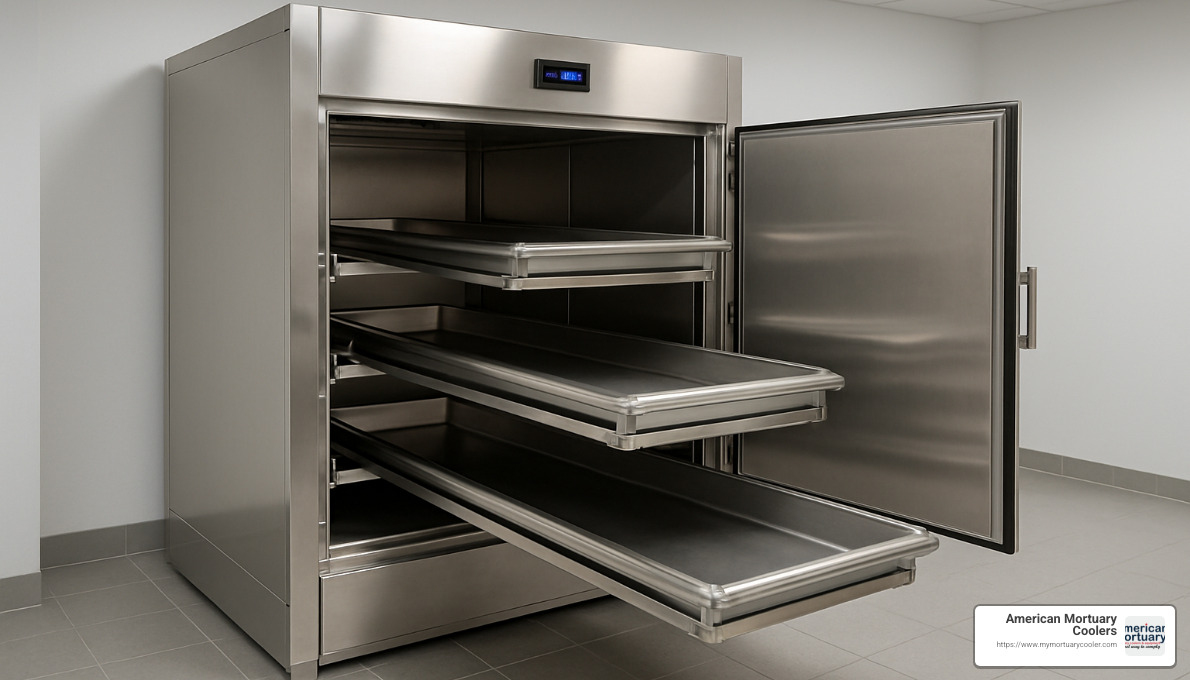
As our Pittsburgh service technician puts it – and I love this quote – "When a mortuary refrigerator fails, every hour counts. Having access to same-day service and overnight parts delivery can be the difference between a minor inconvenience and a major crisis."
The higher mortuary fridges prices for American-made units typically include features that might be optional extras on imported models, like digital temperature displays, alarm systems, interior lighting, and heavy-duty hardware designed to withstand frequent use. Many domestic manufacturers also offer customization options to fit your specific facility needs – something we take pride in at American Mortuary Coolers.
When you consider the total cost of ownership over the 15-20 year lifespan of a quality mortuary refrigerator, those initial price differences often become much less significant than they first appeared.
Factors That Move the Price Needle
When shopping for mortuary refrigeration, you'll quickly find that capacity isn't the only factor affecting the final price tag. Understanding what drives mortuary fridges prices can help you make smarter decisions without compromising on the features that truly matter for your facility.
Materials and Construction
The materials used in your mortuary fridge significantly impact both its price and how long it will serve your facility.
High-quality 304 stainless steel interiors might add 15-20% to your initial investment, but they resist corrosion beautifully and stand up to years of cleaning chemicals. One funeral director told me, "I saved money upfront with a lower-grade steel unit years ago, and regretted it within 18 months when the interior started showing rust spots."
The insulation quality matters tremendously too. Those thick 80mm high-density polyurethane foam walls cost more initially but keep temperatures more stable and reduce your monthly energy bills. The gasketing around doors might seem like a small detail, but premium silicone or magnetic seals outperform basic rubber options by maintaining better temperature control and lasting years longer.
Brand Reputation and Manufacturing Origin
Just as with cars or appliances, the name on your mortuary refrigerator influences its price considerably.
Established U.S. manufacturers typically command prices 30-50% higher than imports, but they've earned their reputation through decades of reliable performance. Emerging domestic brands offer a middle ground, often 10-15% less expensive while maintaining American manufacturing standards. International manufacturers provide significantly lower upfront prices but may leave you stranded when support or parts are needed.
"We purchased a beautiful imported unit at what seemed like an incredible price," shared one funeral home owner in Oregon. "When the compressor failed 14 months later, we finded replacement parts would take 8 weeks to arrive from overseas. That experience taught us the true value of domestic support."
Technology and Control Systems
Modern mortuary refrigeration has evolved far beyond simple cooling, with technology options that can significantly affect your final price:
Basic mechanical thermostats add minimal cost, while digital temperature displays typically add $200-$500 to your investment. For those wanting more precise control, programmable controllers will increase costs by $500-$1,200. Remote monitoring capabilities – allowing you to check temperatures from your phone or receive alerts – add $800-$1,500 but provide tremendous peace of mind. Complete data logging systems that document temperature histories (crucial for regulatory compliance) generally add $1,000-$2,000.
Refrigeration System Design
The heart of your mortuary fridge – its cooling system – represents a substantial portion of the total cost.
Multi-body units with independent compressors cost 25-40% more but allow you to set different temperatures for different chambers – valuable when some remains require colder storage than others. Energy-efficient compressors may add 10-15% upfront but reduce operating costs for years to come. For medical examiners and larger facilities where downtime isn't an option, redundant backup systems might double the refrigeration component costs but eliminate the risk of complete system failure.
Regional Factors
Your location plays a surprising role in determining your final price.
Shipping distance matters – freight costs from our Tennessee manufacturing facility to California can add 5-8% more compared to deliveries to nearby states. Local regulations in states like California and New York sometimes require additional features or certifications, potentially adding 5-15% to costs. Even local energy costs influence smart buying decisions – facilities in areas with high electricity rates often find premium energy-efficient models pay for themselves through reduced utility bills.
visit here Understanding the mortuary fridge price is crucial
Advanced Features & Their Cost Impact
Today's mortuary refrigerators offer impressive technological advancements that improve functionality while affecting the bottom line. Here's how specific features impact mortuary fridges prices:

Temperature Control and Monitoring
The difference between basic and advanced temperature management is substantial. A simple digital display might add $200-$500, while sophisticated touchscreen PID controllers with precise temperature regulation can add $800-$1,200. Temperature data logging systems that record 24-hour histories typically add $600-$900, and password protection features to prevent unauthorized temperature adjustments add another $300-$500.
Remote monitoring capabilities have become increasingly popular, allowing staff to check temperatures via internet connection from anywhere. These systems typically add $1,000-$1,500 but provide invaluable peace of mind.
"The temperature logging feature paid for itself during our recent power outage," a Chicago funeral director told me. "Being able to document that our units maintained safe temperatures throughout was invaluable for both regulatory compliance and our own peace of mind."
Safety and Backup Systems
When it comes to preserving human remains, reliability isn't optional. High/low temperature alarms add $300-$775 but alert staff before temperatures reach dangerous levels. Door ajar alarms ($200-$400) prevent costly temperature fluctuations from doors left slightly open. Power failure notification systems ($500-$800) alert staff immediately when electricity is interrupted.
Battery backup systems that keep displays and alarms functioning for up to 72 hours during power outages add $700-$1,200. Emergency power connection readiness features ($400-$600) allow quick hookup to generators during extended outages.
Material and Surface Improvements
The interior environment of your mortuary refrigerator affects both cleanliness and longevity. SmartProtec® antimicrobial surface treatments add $500-$900 but help control bacteria and odors. Reinforced flooring designed for heavier cots adds $300-$700 but prevents sagging and damage over time. Improved insulation for facilities in extreme environments adds $400-$800 but maintains more consistent interior temperatures.
Accessibility and Ergonomic Features
Staff safety and efficiency features often justify their additional cost through reduced injury risk and improved workflow. Telescoping slide rails add $1,500-$3,000 per body position but dramatically improve staff access and reduce physical strain. Hydraulic lift assistance ($2,000-$4,000) helps with heavier remains. Ramps and accessibility features ($575-$1,200) facilitate easier loading, while locking handles and security features ($220-$500) protect access. Castors for mobility ($885-$1,200) allow units to be moved for cleaning or reconfiguration.
"The telescoping rails are our most requested upgrade," our New York representative often says. "While they add significantly to the cost, facilities that handle higher volumes find the improved accessibility and reduced staff strain well worth the investment."
Bulk & Wholesale Strategies
For larger facilities or organizations managing multiple locations, smart purchasing strategies can yield substantial savings on mortuary fridges prices.
At American Mortuary Coolers, we offer volume discounts that can make a significant difference: 5-8% off for 2-3 units, 8-12% off for 4-6 units, and 12-18% off for 7+ units, with custom pricing available for larger orders. These discounts can translate to thousands of dollars in savings, particularly with higher-capacity models.
Smaller funeral homes don't have to miss out on savings opportunities. Regional funeral director associations often negotiate group rates that individual members couldn't access alone. Management companies overseeing multiple funeral homes can coordinate purchases to reach discount thresholds. Even hospital systems sometimes include affiliated funeral homes in their equipment procurement, leveraging their buying power.
Rather than focusing solely on the upfront price, many buyers leverage financing to manage cash flow while securing higher-quality equipment. We offer qualified buyers options like zero down payment, no payments for 90 days, extended term financing up to 84 months, and lease-to-own arrangements that include maintenance.
"Financing allowed us to purchase the exact configuration we needed rather than compromising on features," a multi-location funeral home director from the Midwest told me recently. "The monthly payment difference between a basic model and our preferred unit was less than $100, which was easily justified by the improved functionality."
Remember to factor lead times into your planning, especially for bulk orders. Standard models typically require 4-6 weeks for multiple units, custom configurations need 8-12 weeks, and international orders may take 12-20 weeks including shipping and customs clearance.
The Ultimate Guide to Mortuary Refrigerator Prices and Comparisons
New vs. Used vs. Refurbished: Total-Cost Showdown
When you're looking at mortuary fridges prices, it's tempting to consider used or refurbished units to save some money upfront. But as we've learned from working with hundreds of funeral homes, the initial price tag only tells part of the story. Let's look at the complete picture of what you're really paying for over time.
New Mortuary Refrigerators
Brand new mortuary refrigerators come with premium mortuary fridges prices - typically $5,800-$6,500 for a 1-body unit, $7,611-$8,559 for a 3-body, and $15,000-$25,695 for a 6-body model. But that higher initial investment brings significant benefits.
You'll get a full manufacturer warranty, often covering mechanical components for 1-5 years and panels for up to 15 years. New units meet the latest energy efficiency standards, potentially using 25-40% less electricity than older models. You'll also receive complete documentation for regulatory compliance, customization options to match your specific needs, and an expected service life of 15-20 years.
The total cost picture looks even better when you consider the predictable maintenance costs (minimal for the first 5-7 years), lower energy bills month after month, and higher resale value (about 40-60% of purchase price after 5-7 years).
Used Mortuary Refrigerators
Used units typically cost about 40-60% of new ones, depending on age and condition. For example, you might find a 3-body used unit for approximately $3,000-$5,000 - a substantial savings at first glance.
The advantages are clear: lower upfront investment, immediate availability without manufacturing lead time, and potential suitability for temporary or backup applications.
However, the total cost factors can quickly erode those savings. Used units usually come with limited or no warranty coverage, unknown maintenance history, and potential hidden issues. They typically consume 15-40% more energy than new models and have a shorter remaining service life (often just 3-8 years). You might also face challenges with regulatory compliance and sourcing replacement parts for older models.
As our Atlanta technician likes to say, "Buying a used mortuary refrigerator is like adopting a pet from a shelter. You might save on the adoption fee, but you don't know what health issues you're inheriting, and the vet bills might catch you by surprise."
Refurbished Mortuary Refrigerators
Refurbished units offer a middle ground, typically priced at 60-75% of new models. A 3-body refurbished unit might cost around $4,500-$6,500.
These units come with some reassurance: a partial warranty (typically 90 days to 1 year), major components that have been inspected and replaced as needed, and often updated controls and compressors. They strike a balance between cost and reliability.
In terms of total cost factors, refurbished units generally offer moderate energy efficiency (better than used but worse than new), an intermediate expected service life of 8-12 years, and a mix of original and new components with some regulatory compliance updates.

Comparative Total Cost Analysis
When we analyze the total cost of a 3-body mortuary refrigerator over a 10-year period, the numbers tell an interesting story:
| Cost Factor | New Unit | Refurbished Unit | Used Unit |
|---|---|---|---|
| Initial Purchase | $8,000 | $5,500 | $4,000 |
| Energy Costs (10 yr) | $5,200 | $6,500 | $7,800 |
| Maintenance (10 yr) | $2,500 | $4,000 | $6,500 |
| Replacement Parts | $800 | $1,800 | $3,200 |
| Downtime Costs | Minimal | Moderate | Significant |
| Residual Value | $2,400 | $800 | $0 |
| Total 10-Year Cost | $14,100 | $17,000 | $21,500 |
This analysis reveals something that surprises many buyers focused primarily on initial mortuary fridges prices: while the upfront cost of a new unit is higher, the total cost of ownership over a typical 10-year period often favors new equipment.
The Definitive Guide to Buying a Mortuary Fridge for Sale
When a Refurb Could Make Sense
Despite the long-term cost advantage of new units, there are specific scenarios where refurbished equipment makes financial sense.
If your facility faces severe capital limitations, a quality refurbished unit from a reputable dealer can provide a reasonable compromise. Our Columbia, SC representative often advises, "We recommend certified refurbished units from established dealers who offer at least a one-year warranty."
For temporary facilities, disaster response, or short-term needs (2-3 years), the lower initial investment in refurbished equipment may be justified, particularly if the unit won't see heavy, continuous use.
Many larger facilities maintain backup refrigeration capacity for peak periods or emergency situations. These units, which may only operate occasionally, represent good candidates for refurbished equipment.
A funeral director from the Rocky Mountain Region shared with us, "We purchased a refurbished 2-body unit as overflow capacity for our busy winter months. For something that only runs about 25% of the year, it was the right financial decision."
Why New Often Wins on mortuary fridges prices Over Time
For primary, daily-use mortuary refrigeration, new equipment typically offers several advantages that translate to better long-term value.
Energy rebates and incentives from many utilities can offset 5-15% of the purchase price for energy-efficient new equipment. These incentives are rarely available for used or refurbished units.
Established service networks come with new equipment, giving you access to manufacturer-trained service technicians and readily available parts, minimizing downtime during critical periods.
Compliance assurance is another key benefit, as regulatory requirements for mortuary equipment continue to evolve. New equipment ensures compliance with current standards, potentially avoiding costly upgrades or penalties.
A funeral home owner in our Pacific Region service area summed it up perfectly: "We learned the hard way that saving $3,000 on purchase price can cost you $6,000 in repairs, downtime, and headaches. For essential equipment that runs 24/7/365, buying new is simply good business."
Beyond the Price Tag: Installation, Maintenance & Energy Bills
When evaluating mortuary fridges prices, the sticker price represents only part of the total cost equation. Installation, maintenance, and ongoing energy consumption can significantly impact the lifetime cost of ownership.
Installation Considerations
Installation costs vary based on unit type, facility preparation, and location:
- Self-contained cabinet units: $500-$1,200 for basic installation
- Walk-in coolers: $2,000-$5,000 for standard installation
- Site preparation: May add $1,000-$3,000 if electrical upgrades or floor reinforcement is needed
Additional installation factors that may affect costs include:
- Lift-gate fees: $150-$300 for units delivered to locations without loading docks
- Assembly services: $400-$800 for units shipped unassembled
- Remote compressor installation: $800-$1,500 for units where the cooling system is separated from the cabinet
"Many customers don't realize that a standard 110V outlet may not be sufficient for larger units," notes our Rocky Mountain Region installation specialist. "Upgrading electrical service can add significant cost, but it's essential for proper operation."
Maintenance Requirements and Costs
Regular maintenance is crucial for ensuring reliability and maximizing equipment lifespan:
- Quarterly preventive maintenance: $200-$400 per visit
- Annual thorough service: $500-$800
- Compressor replacement (if needed after warranty): $1,200-$2,500
- Control system repairs: $300-$900
Establishing a maintenance contract can reduce these costs by 15-25% while ensuring priority service during critical failures.
Energy Consumption Analysis
Operating costs represent a significant portion of lifetime expenses:
- Small (1-2 body) unit: Approximately $30-$50 monthly in electricity
- Medium (3-4 body) unit: Approximately $60-$90 monthly
- Large (6+ body) unit: $100-$180 monthly
- Walk-in cooler: $150-$300 monthly
Energy-efficient models may cost 10-15% more initially but can reduce operating costs by 20-30%, typically paying for themselves within 3-5 years.
"We've seen facilities save over $1,000 annually by upgrading to current energy-efficient models," shares our energy consultant based in New York. "In states with higher electricity rates, the savings can be even more substantial."
Local Utility Incentives
Many utility companies offer rebates or incentives for energy-efficient refrigeration equipment:
- Equipment rebates: $200-$1,500 depending on efficiency improvement
- Demand reduction programs: Potential ongoing credits for reduced peak load
- Energy audit programs: Free or subsidized assessment to identify efficiency opportunities
These programs vary by region but can significantly offset the higher initial cost of premium, energy-efficient models.
Hidden Costs Checklist
When budgeting for a mortuary refrigerator, be sure to account for these often-overlooked expenses:
Essential Accessories
- Floor insulation: $300-$700 (if not included in base price)
- Ramps for roll-in units: $575-$900
- Mortuary racks: $1,200-$3,500 depending on style and capacity
- Body boards or trays: $200-$500 each
- Digital thermometers: $100-$300 (if not included)
Extended Coverage
- Extended warranty: Typically 10-15% of purchase price for each additional year
- Service contracts: $800-$2,000 annually depending on response time guarantees
- Preventive maintenance packages: $600-$1,500 annually
Consumables and Supplies
- Replacement air filters: $50-$150 annually
- Cleaning supplies: $100-$200 annually
- Gasket replacements: $200-$400 every 3-5 years
"We recommend our customers budget approximately 5% of the purchase price annually for maintenance, repairs, and energy costs," advises our maintenance coordinator from the Southeast Region. "This ensures there are no unpleasant surprises and helps extend equipment life."
Frequently Asked Questions about mortuary fridges prices
What temperature range should I choose?
Choosing the right temperature range isn't just a technical decision—it's about matching your facility's specific needs with the right preservation environment.
For most funeral homes, standard positive temperature units (2°C to 4°C/36°F to 39°F) strike the perfect balance between performance and cost. These units effectively slow decomposition while maintaining the body's condition for viewing and services over a typical 3-7 day period.
"I always tell new funeral directors to think about their typical case timeline," shares our Tennessee-based consultant. "If you're generally conducting services within a week, positive temperature units give you everything you need without the extra expense of freezer units."
Negative temperature units (-10°C to -50°F/14°F to -58°F) serve a more specialized purpose. While they cost 30-50% more upfront and consume significantly more energy, they're invaluable for situations requiring extended preservation.
A medical examiner who works with our equipment explains it simply: "Freezer units are like specialized tools in your toolbox—essential for forensic work, disaster response, or when identification might take weeks, but unnecessary for routine funeral home operations."
Do bulk orders really lower per-unit cost?
Yes! The savings on bulk orders are real and substantial—something we've seen benefit everything from multi-location funeral home groups to regional funeral director associations who coordinate their purchases.
When you order multiple units, the savings stack up predictably:
- 2-3 units: You'll typically see a 5-8% price reduction
- 4-6 units: Discounts generally reach 8-12%
- 7+ units: Expect significant savings of 12-18%
But the benefits go beyond just the price tag. One of our Dallas-based account managers loves telling clients about the "hidden" advantages: "Even if your locations are spread across different states, ordering together often qualifies you for reduced shipping costs per unit, priority manufacturing scheduling, and sometimes even better warranty terms."
One funeral home group in the Midwest saved nearly $8,000 by coordinating the purchase of five units across their locations—money they invested in additional features that improved staff efficiency.
Are digital alarms worth the premium?
When clients ask me about digital alarms, I often share a story from a Pittsburgh funeral director: "Our digital alarm system paid for itself ten times over when it alerted us to a failing compressor at 2 AM. We transferred bodies to our backup unit and scheduled repairs before facing a complete failure. That $500 feature saved us thousands in emergency service calls and prevented a potentially devastating situation."
Yes, digital alarm systems add $300-$800 to mortuary fridges prices, but they provide protection that's difficult to quantify until you need it.
These systems offer several tangible benefits that most facilities find invaluable:
First, they catch problems early, alerting you to temperature fluctuations before they become critical failures. Second, many include automatic data logging that satisfies regulatory requirements—documentation that can prove invaluable during inspections. For facilities with periods of minimal staffing, the remote notification features that send alerts via text or email provide genuine peace of mind.
"It's like insurance," explains our service technician from Memphis. "You hope you never need it, but when something goes wrong at midnight on a holiday weekend, you'll be thankful for the investment."
For smaller facilities watching their budget, even basic digital monitoring represents one of the smartest upgrades you can make—protection that works 24/7, even when you can't.
Conclusion & Next Steps
When it comes to mortuary fridges prices, there's so much more to consider than just the number on the price tag. Throughout this guide, we've explored all the factors that affect not just what you'll pay upfront, but what your refrigeration solution will cost you over its entire lifetime.
I've spent years helping funeral directors find the right balance between budget constraints and long-term value. If there's one thing I've learned, it's that the cheapest option rarely turns out to be the most economical in the long run.
Think of your mortuary refrigerator purchase like buying a house rather than a weekend getaway. This is equipment you'll rely on every day for potentially decades. The decisions you make now will affect your operations, your staff, and the families you serve for years to come.
When making your final decision, remember these key points:
Look beyond that initial sticker shock. A unit that costs $2,000 more upfront but saves $500 a year in energy and requires half the maintenance will pay for itself quickly. The real value emerges over time through reliability, efficiency, and reduced headaches.
Always plan for growth in your business. I typically recommend selecting a unit with about 25-30% more capacity than you currently need. This gives you flexibility during busy periods and room to grow without needing to replace equipment prematurely.
Not all features are created equal. While digital displays and fancy finishes might look impressive, your investment is better directed toward quality construction, energy-efficient compressors, and reliable alarm systems. These are the elements that truly matter when you're facing a summer power outage or holiday weekend rush.
Quality equipment should last 15-20 years with proper care. When you spread the purchase price across that timespan, the difference between budget and premium options often amounts to just a few dollars per week – a small price for peace of mind.
Always verify that any unit you're considering meets all regulatory requirements for your area. The last thing you want is to invest in equipment that doesn't comply with local codes or energy standards.
Here at American Mortuary Coolers, we take pride in crafting custom solutions that fit both your specific facility needs and budget constraints. Our Tennessee manufacturing facility allows us to ship directly to you anywhere in the contiguous 48 states, cutting out middleman markups while ensuring every unit meets or exceeds all U.S. standards.
Whether you're replacing aging equipment after years of service, expanding your facilities to meet growing demand, or setting up a brand new operation, our team is ready to help you steer these important decisions. We understand that every funeral home has unique needs, and we're committed to finding the solution that works best for your specific situation.
More info about our leading morgue coolers
At the end of the day, the right mortuary refrigeration solution isn't just about preserving the deceased – it's about preserving your reputation for excellence and care. By focusing on long-term value rather than just the bottom line price, you'll make a choice that serves both your business and the families in your care for years to come.


